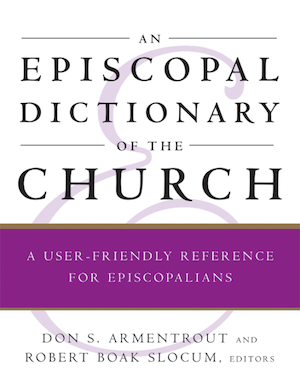Glossary of Terms
St Luke’s Church, Smithfield, Virginia
This church, also known as Old Brick Church, is near Smithfield in Isle of Wight County. It claims the distinction of being the oldest Episcopal Church in Virginia and the […]
St Luke’s Journal of Theology
See Sewanee Theological Review.
St Margaret’s House (School for Christian Service and Deaconess Training School of the Pacific)
Anita Adela Hodgkin was received as a candidate for the office of deaconess by Bishop William F. Nichols of California on Apr. 3, 1907. May Bostick Mott was received as […]
St Mark’s College, Grand Rapids, Michigan
In 1850 a charter was obtained for the establishment of an institution for academic, collegiate, and theological learning to be known as St. Mark's College. The only president was the […]
St Mary’s College, Dallas, Texas
The Rt. Rev. Alexander Charles Garrett, the first Bishop of Dallas, founded this school for women. A cornerstone was laid on July 4, 1876, but classes did not begin until […]
St Mary’s College, Raleigh, North Carolina
This school opened on May 12, 1842. In 1954 the name was changed to St. Mary's Junior College. It is now called St. Mary's College. It is a two-year school […]
St Mary’s Hall, Burlington, New Jersey
In 1836 Bishop George Washington Doane of New Jersey bought an existing school for girls in Burlington and renamed it St. Mary's Hall. The new school opened on May 1, […]
St Michael’s Church, Charleston, South Carolina
Historic seat of St. Michael's parish. By an act of the South Carolina General Assembly on June 14, 1751, the parish of St. Philip's was divided and the parish of […]
St Patrick’s Breastplate
See Breastplate of St. Patrick.
St Paul’s College, College Point (Flushing), New York
The cornerstone of St. Paul's College was laid on Oct. 15, 1836, by the Rev. William Augustus Muhlenberg. The Christian religion was the center of education for Muhlenberg, and the […]
St Paul’s College, Lawrenceville, Virginia
St. Paul's Normal and Industrial School was founded on Sept. 24, 1888, by the Rev. James Solomon Russell (1857-1935). In 1906 it became a part of the American Church Institute […]
St Paul’s College, Palmyra, Missouri
The Governor Clark Mission was established in Feb. 1848 on fifty-seven acres of land in Marion County which was purchased by the Rt. Rev. Cicero Stephens Hawks, the second Bishop […]
St Paul’s College, Texas
The Rev. Charles Gillette (1813-Mar. 6, 1869) founded St. Paul's College. It opened on Jan. 5, 1852, at Anderson, as the Anderson Female Institute and Texas Diocesan School. It received […]
St Paul’s School, Concord, New Hampshire
A leading co-educational college preparatory school in the United States. It was founded on Apr. 3, 1856, by a Boston physician, George Cheyne Shattuck, Jr. Dr. Shattuck wanted to educate […]
St Paul’s University, Tokyo
Founded in 1874 by Bishop Channing Moore Williams, it officially became St. Paul's College in 1907. Native Japanese leadership assumed administration in 1920 and it acquired university status in 1922. […]
St Philip’s Church, Charleston, South Carolina
Oldest religious congregation in South Carolina. It was formed around 1670, when a colony of settlers disembarked in Apr. at “Albemarle Point.” By 1679 the settlers had moved to the […]
St Philip’s Church, New York
This African American congregation was founded in 1818. It was the second African American Episcopal congregation in the United States after St. Thomas African Episcopal Church, Philadelphia. The first members […]
St Philip’s College, San Antonio, Texas
St. Philip's College was founded in 1898 by the Rt. Rev. James Steptoe Johnston (1843-1924), the second Bishop of West Texas, as St. Philip's Normal and Industrial School, to prepare […]
St Stephen’s College
See Bard College, Annandale-on-Hudson, New York.
St Stephen’s College Theological Department
St. Stephen's College (now Bard) was established on Mar. 20, 1860. Under its second warden, the Rev. Thomas Richey, a theology department with a three-year course was established. Three young […]
Glossary definitions provided courtesy of Church Publishing Incorporated, New York, NY,(All Rights reserved) from “An Episcopal Dictionary of the Church, A User Friendly Reference for Episcopalians,” Don S. Armentrout and Robert Boak Slocum, editors.

